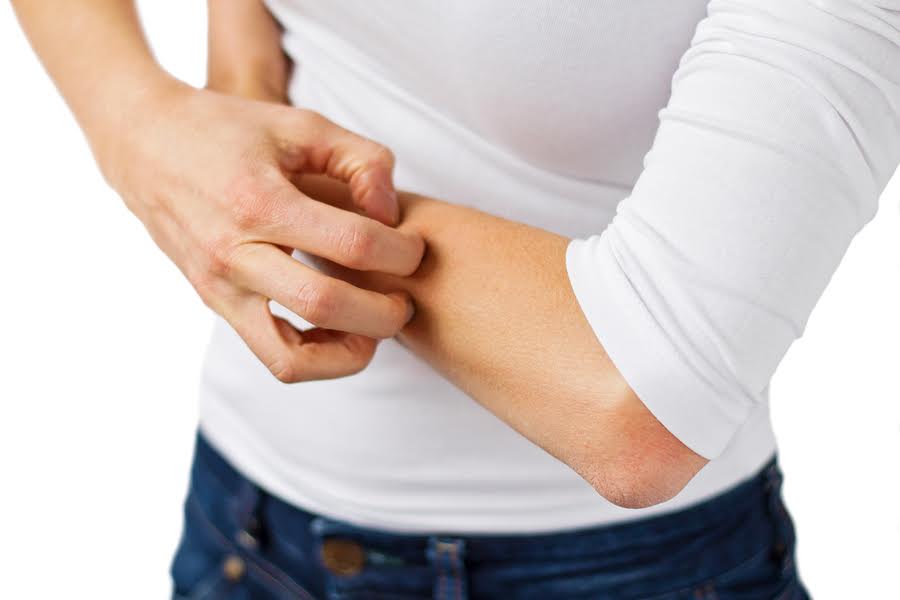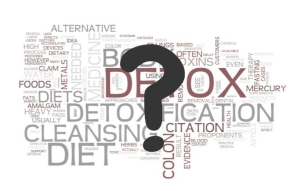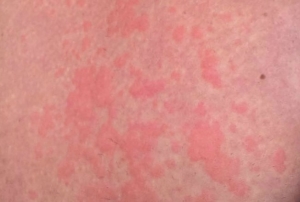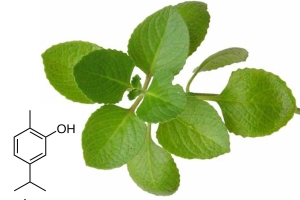Can Essitail Ooils Draw Toxicins Out of Body
by Kristina Bauer
Globally, aromatherapy is becoming increasingly popular. As the number of essential oil users continues to grow, and as recommendations for undiluted use increase, so exposure increases. As Robert Tisserand notes, "The number of incidents of an adverse reaction to an essential oil depends on:
• Its inherent toxicity
• The number of people exposed to it
• The degree of exposure (oil concentration and time of exposure)"
(Tisserand & Young, 2014, p. 25)
With a larger population of users, including many with greater exposure via daily and/or neat use than might have been prevalent a decade ago, we can reasonably expect more frequent incidences of adverse reaction.

It is believed that the potential for risk varies with the amount of oil applied, the concentration (i.e. dilution) of the essential oil, frequency of use, duration of use, and other factors (Tisserand & Young, 2014, p. 24). We can reasonably expect that statistically only a minority individuals will experience unpleasant symptoms, especially when essential oils are being used in low dilutions. Indeed, some people never experience any skin redness, even with repeated use of undiluted essential oils. Still, the potential for adverse skin reaction exists with all essential oils—and with all users.
When unexpected skin reactions to essential oils do occur, we may be challenged in determining the nature of the adverse reaction – even dermatologists have difficulties sometimes. The possibilities include irritation, allergic reaction and phototoxicity, which all involve inflammation – redness accompanied by pain, blistering, and/or itching. However, some have suggested that such skin reactions may in fact be evidence of detoxification. Detox theory proponents interpret skin inflammation as evidence that the topical application of an essential oil is having a detoxifying effect on our system and that the reaction is a favorable and desirable response (Stewart, n.d.).
When redness, hives, blisters, burning, or other symptoms do occur, especially where presenting at the exact site of application, it may help to understand how adverse reaction stands apart from detoxification—and vice versa.
What is Detoxification?
To meaningfully explore the detox theory, we first need to consider both toxicity and detoxification. Typically, something is considered to be a "toxin" when it contains a potentially harmful or poisonous material that creates local or systemic adverse reaction, "especially when capable of causing death or serious debilitation" (Merriam Webster, n.d.).
Toxicity, or "the degree to which a substance can damage the body", is dependent upon dose and does not require a substance to be formally labeled as a toxin; "even water can lead to water intoxication when taken in too high a dose" ('Toxicity', 2015). Toxicity can be caused by a single very high exposure, or by long-term exposure, but the net effect is that the body's detoxification systems are overwhelmed. Toxicity may be exacerbated by individual sensitivity or "through interactions with other substances present in the body" as in interactions with pharmaceuticals (Tisserand & Young, 2014, p. 24). The toxicity of an individual substance may also be intensified in a variety of ways, i.e., when multiple substances containing the same potential toxin are combined, thereby elevating the total risk to which an individual may be exposed (Bates, n.d.).

Detoxification is "the metabolic process by which toxins are changed into less toxic or more readily excretable substances" (Dictionary.com). When functioning properly, the organs of elimination—including the lungs, digestive system, kidneys, liver, and skin—provide ongoing detoxification in the human body with the bulk of toxins handled by the liver and kidneys ('Organ Systems – Detoxification', n.d.). While the word originated in biochemistry, detoxification has evolved in common usage to encompass most processes by which the presence of a perceived toxin or harmful substance is eliminated or meaningfully reduced. To wit, "detoxification" programs seek to eradicate particular substances, and to coach individuals towards more healthful choices.
Similarly, individuals may seek to "detoxify" by dramatically reducing food intake (and increasing liquid intake) for a time and/or removing specific foods or liquids from their diets altogether through a fast or "cleanse". Symptoms such as headache, fatigue, and gastro-intestinal upset typically accompany the detoxification process (Scott Johnson, 2014). In spite of the uncomfortable symptoms, "detox" is broadly associated with a positive outcome, in terms of elimination, cleansing, and purification.
Exploring the Detox Theory in Aromatherapy
The detox theory in aromatherapy poses a challenge as it suggests that the body's attempt to alert the user to a possible adverse reaction is actually a sign of a positive (detoxification) response. In many ways, the detox theory contradicts conventional thinking about what adverse reactions are—and how they should be addressed—by framing a potential adverse reaction as a favorable response.
Those newest to essential oil use and/or those without exposure to generally agreed-upon best practices with respect to topical application may be most likely to hear the detoxification rationale in response to concerns about potential adverse reactions. To wit, the people most vulnerable to hearing the detox theory may also be those most likely to suffer for it as they may lack a basic understanding of where potential risks lie and how adverse reactions warranting both attention and vigilance may manifest.
To some extent, the detox theory in aromatherapy challenges the definition of detoxification altogether as it aligns an additive process (topical application of an essential oil or blend) with an eliminative process (detoxification) (Pappas, n.d.). In true detoxification, something is removed, diminished, or eradicated. To really drive a detoxification response, an essential oil would have to directly engage with the body's elimination systems.

Detox or allergic reaction?
In the case of the skin specifically, elimination of unwanted substances occurs via sweat glands (perspiration) and sebaceous glands (acne, boils, etc.) (Marieb, 2014). Invariably, elimination through the skin occurs via fluids exiting the body. While the skin does support elimination through perspiration, scientists suspect that "less than 1% of toxins are excreted this way" (Johnson, 2014). Though the detox theory suggests that skin reactions following topical application indicate a detoxifying effect through the skin from the applied essential oil, "It's highly unlikely that everyone who experiences a skin reaction from topical essential oil application is sweating these toxins out immediately after, or several hours following application" (Johnson, 2014).
Detox proponents may claim that essential oils cannot possibly cause allergic reactions because they don't contain proteins, or that pure, unadulterated essential oils could not. Therefore, in spite of uncomfortable symptoms, the person should keep applying the oil. Let's take a closer look at these claims.
"Essential oils don't contain proteins"
The potential for allergic reaction to essential oils is sometimes dismissed as impossible by detox theorists because they assert that "allergies are erroneous immune responses to proteins, peptides, and amino acids… none of which are found in essential oils" (Stewart, n.d.). However, while it's true that pure essential oils don't contain proteins, peptides, or amino acids, "we also know that penicillin and nickel don't have these substances either, and they can still cause allergies" (Johnson, 2014). Furthermore, "proteins in the skin may react with the oil, causing an allergic reaction" (Purchon & Cantele, 2014, p. 14). Indeed, according to Robert Tisserand, "most cases of contact dermatitis to essential oils are allergic as distinct from irritant" (Tisserand & Young, 2014, p. 27).
"Pure essential oils can't cause adverse reactions"
Proponents of the detox theory may also suggest that adverse reaction can only result from the use of adulterated essential oils and, by extension, assert that "certified" or "therapeutic grade" essential oils from a trusted brand can't elicit adverse reaction (Stewart, n.d.). Terms such as 'therapeutic grade' 'certified pure therapeutic grade' or 'clinical grade' are not assigned, regulated, or endorsed by any governing body but rather marketing terms (often trademarked) leveraged by some essential oil suppliers; they don't assure safety (or, variously, lack of potential for adverse reaction) in the use of an essential oil or blend, nor can they account for how the context of the user—or the oil—may compromise safe use.

Carvacrol lends irritancy to oregano oil
Very few adverse reactions are caused by impurities in an essential oil. Even if they are there, they are usually not present in sufficient concentration to cause a safety risk, and even impurities are not necessarily toxic. Almost all adverse reactions can be explained by the natural constituents present in an essential oil. Oregano oil is a potential skin irritant because of its 70-80% content of carvacrol, which is an irritant. Cinnamon bark oil is a potential allergen because it consists of 65-80% cinnamaldehyde – a known allergen. Bergamot oil is phototoxic because it contains 0.3% of bergapten, a potent photosensitizer. And, even the "purest" essential oil may be prone to oxidation that further increases the risk of adverse reaction.
"Keep applying the oil"
Detox theorists may suggest to individuals that their adverse reaction, such as a rash, is a welcome sign of detoxification (Stewart, n.d.). When experiencing initial signs of potential adverse reaction, individuals may be encouraged to continue using essential oils on the affected area so they might facilitate the detoxification process which the oils are supporting (as "evidenced" by the emerging rash, redness, blisters, etc). Some may advise that continued application of the same oil is the best course of action, and that eventually, when all the toxins are gone, the reaction will cease (Stewart, n.d.). However, the "toxin" to which our body is reacting may well be the essential oil or blend itself.
When symptoms of allergic reaction such as hives or rash appear, the individual experiencing the reaction may hear from detox theorists that allergic reaction is altogether impossible. One essential oil user with a known allergy to anise was inadvertently exposed to anise in a blend she received from someone else. (She had diluted the blend to 2% and applied it to facilitate relaxation.) In the first minutes after application, she experienced a rash. When she approached her friend to determine if there was anise in the blend that could have triggered an allergic reaction, she was told that, while there was indeed anise in the blend, she couldn't "be allergic to oils because they're pure, especially brand of oils." Instead, her friend suggested that she was "just detoxing" because she was "exhausted." When her rash covered her from head to toe and her throat began to feel itchy within five minutes of application, the user went to the emergency room seeking medical attention (personal communication to Robert Tisserand.)
One essential oil user reports that after using undiluted lavender, tea tree, and helichrysum oils on a second degree burn, she can no longer use lavender or helichrysum at all as she breaks out in hives and develops an "itchy" rash with each use. Before she ceased using the oils altogether, and while her adverse reactions persisted, she was encouraged to continue using them as she was "detoxing and the oils would help". However, her unwelcome symptoms persisted until she stopped using lavender and helichrysum (personal communication to RT).
The quotes from Scott Johnson are all from this video:
Even where an adverse reaction can't be identified as uniquely driven by allergy, irritation or phototoxicity, it would be unwise to dismiss every adverse reaction as a detoxification response. As Scott Johnson notes: "While some skin reactions may indeed be a detox reaction, unless other the classic symptoms of body detoxification are also present—like headache, body aches, fatigue, gastro-intestinal problems—and unless the reaction lasts between one and three days, it is highly unlikely that every time a person experiences a skin reaction after topical application of essential oils that it is a detox reaction" (Johnson, 2014).
Though severe allergic reactions are exceedingly rare, any adverse reaction or allergic symptoms should be met with exceptional vigilance—and appropriate medical attention. In the event that symptoms worsen, continued application of the allergen (in our scenario, an essential oil) will only accelerate and exacerbate the body's allergic reaction.
Summary
On close examination, it appears that an inflammatory skin reaction to a topical essential oil is not likely to be a detoxification response. Though we may not be able to identify the exact nature of an adverse reaction, it would be unwise to "write off all skin reactions to essential oils as detox reactions" (Johnson, 2014). Redness, itching, irritation, and other adverse effects are more likely to be signs that one should immediately cease application of the relevant essential oil and seek advice from a qualified professional. With extreme reaction, discomfort, and more severe symptoms, appropriate medical attention is most certainly advised. Even if the cause of the redness ultimately proves to be something other than an essential oil, nothing should discourage us from initially responding quickly, thoughtfully, and thoroughly to secure our health and wellbeing.
References
Bates, N. (n.d.). Principles of Toxicology. Retrieved 28 April 2015, from http://toxicology.usu.edu/660/html/principles.html
Detoxification (Diets and Procedures). (n.d.). Retrieved 13 May 2015, from http://www.webmd.com/diet/detoxification-diets-and-procedures-directory
Dictionary.com. The definition of detoxification. Retrieved from http://dictionary.reference.com/browse/detoxification
Johnson, S. (2014, October 20). Skin Reactions to Essential Oils. YouTube. Retrieved from https://www.youtube.com/watch?v=U-5qUyq7CZM
Marieb, E. N. (2014). Essentials of Human Anatomy and Physiology (10th ed.). San Francisco: Benjamin-Cummings Publishing Company
Merriam Webster. (n.d.). toxic | containing poisonous substances. Retrieved 28 April 2015, from http://www.merriam-webster.com/dictionary/toxic
Organ Systems – Detoxification. (n.d.). Retrieved 13 May 2015, from http://peer.tamu.edu/curriculum_modules/OrganSystems/Module_3/index.htm
Pappas, R. (n.d.). ESSENTIAL OIL MYTH #6. Retrieved 13 May 2015, from https://www.facebook.com/notes/essential-oil-university/essential-oil-myth-6/10152670686183083
Purchon, N., & Cantele, L. (2014). The Complete Aromatherapy and Essential Oils Handbook for Everyday Wellness. Robert Rose: Toronto
Stewart, D. (n.d.). Raindrop Messenger Archive: Sensitivities to Essential Oils. Retrieved 28 April 2015, from http://www.raindroptraining.com/messenger/v4n1.html#sensitivities
Tisserand, R. (2010, March). Essential Oils: Premium Quality Yields Premium Results. Massage Magazine
Tisserand, R., & Young, R. (2014). Essential Oil Safety (Second edition). Churchill Livingstone: Edinburgh
Toxicity. (2015, May 12). Wikipedia. Retrieved from http://en.wikipedia.org/wiki/Toxicity
n.d. means "no date"
-
Kristina Bauer, also known as the Untamed Alchemist, is an inspired aromatherapist, passionate herbalist, writer, and educator with over 25 years of experience working with essential oils and herbs. She maintains a well-received aromatherapy and herbal blog, The Untamed Alchemist and offers small-batch aromatic products, product consultations, and workshops through her business, Untamed Alchemy Kristina is currently co-executive producing a feature-length documentary about aromatherapy titled Uncommon Scents.
View all posts
Can Essitail Ooils Draw Toxicins Out of Body
Source: https://tisserandinstitute.org/essential-oils-and-the-detox-theory/